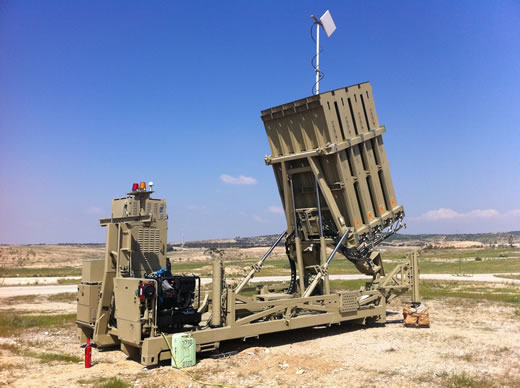
Reluctant to embark on a major retaliatory campaign against Gaza, the Israel Air Force was directed to pre-deploy the ‘Iron Dome’ counter-rocket, artillery and mortar (C-RAM) defense system, despite the military reluctance for such move, before the unit is fully prepared. The current fielding is defined as an ‘operational evaluation’ prior to becoming ‘fully operational capable’.

Israeli decision makers are aware that deploying this defensive capability could encourage Palestinian attempts to challenge the system, in an effort to demoralize the Israeli population (Similar to the Palestinian attempts to hit Israel’s hetherto ‘undefeated’ Merkava tanks in the Gaza strip in the early 2000s, which led to destroying three merkava tanks by Palestinian ‘mega IEDs’.) Prime minister netanyahu announced tha the defensive capability alone will not be sufficient and an effective defense requires a combination of offensive, defensive means maintaining effective deterrance, strength and resolve of the population and government’ However, if the Palestinians will cease their attacks at this point, the deployment could achieve its purpuse in stemming the current escalation without excessive use of force.

The first ‘Iron Dome’ unit, one of two batteries operating with IAF 947 Battalion ‘Iron Dome’ was deployed in the outskirts of the Negev capital Beer Sheva; the second battery is said to be deployed near Ashkelon, north of Gaza.
Iron Dome was designed by Rafael Advanced Defense Systems, as a defensive short-range rocket interceptor, operating with extremely short response time. The system has selective target engagement capability, enabling the system to automatically engage targets posing significant risk while ignoring targets which are aimed to hit empty areas. The system relies on threat warning systems providing early warning for the civil population in the area. It also accurately localizes the launch point of all rockets and mortars fired, providing the IDF an accurate targeting data for counter-attack.

While Iron Dome has repeatedly demonstrated its capability in operational testing, the full system has not been fielded operationally yet, although elements of the network have been located in the area for evaluation.
Although the system was designed to cover a relatively wide area, the current deployment is not meant to provide a broad defense in the area, sites could be relocated often to match operational requirements. the Iron Dome battery comprises a radar, command, control and communications battle management module and remotely operated launch units, positioned at different locations to provide the best coverage of the defensed area.
The Israelis hesitated about deploying the system prior to possessing adequate quantities of systems, to prevent Palestinian challenging the system, by firing salvos of rockets thus rapidly escalating the situation which is quite fragile as is.
According to Brigadier General Doron Gavish, commander, Air Defense Forces, the active defense is a part of a new concept the air defense and the IDF is evaluating. “The first part of this concept is attacking capabilities, the second is alert capabilities. Obviously passive defense is very important, as well as the active defense phase. Gavish said the current ‘Iron Dome’ deployment is part of the comprehensive response in dealing with continuous ballistic rocket attacks, and an important part of its ‘active defense’ capability. ”We are accelerating this operational test in order to be ready as fast as we can with the first systems that will be deployed in the next few weeks.” Gavish said. In the recent tests conducted by the air defense forces last month the units themselves performed the firing and scored impressive results. “During these tests we were shooting against variety of threats, some of them represented those we saw lately being shot at Israel.”
“We are moving from testing and training on the system to evaluating the system operational conditions.” Gavish said. “The evaluation test taking place in the southern part of Israel began today and will last for several weeks” general Gavish said. The units will practice deployment at several sites, with movement between positions being part of the evaluation itself. Testing Iron Dome against real threats, in stressing combat conditions will place the unit, and the entire new C-RAM active-defense in the limelight of the media, political and in fact, the entire world.
Gavish tried to play down the role of this event in the current fragile situation with the Palestinians ”This evaluation test was planned anyhow. Because of what we saw in recent weeks we decided to accelerate this phases; from what we saw in testing, Iron Dome is a very capable system. But it is important to highlight that that for the next weeks we are still in the evaluation phase. This system is designed to defend Israel for next coming years as we build this capability, buy more fire units and enhance its capabilities in order to defend the Israeli population.”
















